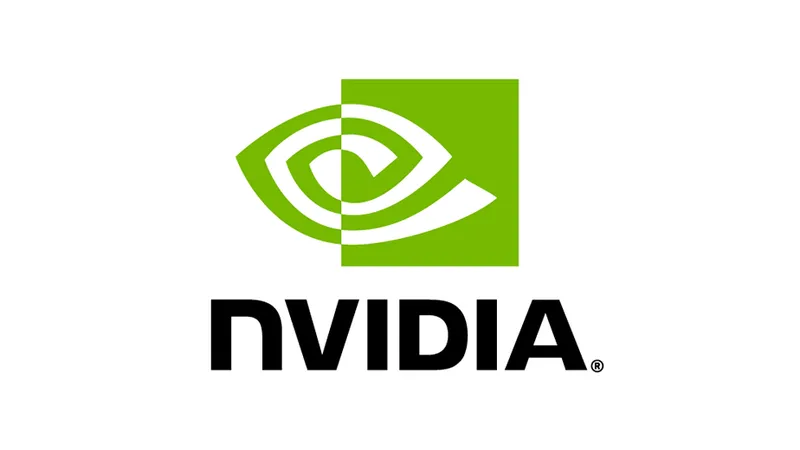Humble Beginnings in Silicon Valley
NVIDIA was founded in 1993 in Santa Clara, California, by Jensen Huang, Chris Malachowsky, and Curtis Priem, with a vision to develop advanced graphics processors that could bring true 3D gaming to personal computers. At a time when Intel and 3dfx dominated the market, the founders saw graphics not merely as entertainment, but as a new language of visual computation. With the launch of the GeForce 256 in 1999, NVIDIA introduced the world’s first programmable graphics processing unit (GPU), igniting a revolution that forever transformed the gaming and visual-computing industries.
From Graphics to Parallel Computing
Entering the 2000s, NVIDIA realized that its GPUs could process far more than just pixels — they could handle massive scientific and engineering data workloads. In 2006, the company launched CUDA, a programming platform that enabled developers to use GPUs for general-purpose computation (GPGPU). This innovation changed the computing landscape, powering breakthroughs in science, energy, and medicine. That strategic move elevated NVIDIA from a gaming company into a global computing powerhouse.
Rising Through Crisis Toward Stability
During the 2008 financial crisis, NVIDIA faced sharp declines in demand, and its stock price dropped more than 70 %. Yet CEO Jensen Huang restructured operations and redirected investment toward research, data centers, and long-term computing platforms instead of relying solely on gaming. This strategic patience allowed NVIDIA to recover quickly and build a financially resilient foundation — ready for the coming age of artificial intelligence.
Artificial Intelligence Changes Everything
In 2012, researchers at the University of Toronto used NVIDIA GPUs to train the AlexNet neural network, which dramatically advanced modern artificial intelligence. From that moment, NVIDIA became synonymous with AI computing. Later, its A100 and H100 chips dominated global data centers. With demand skyrocketing, NVIDIA’s market capitalization surpassed US $ 2 trillion in 2024, making it the world’s third-most-valuable company after Apple and Microsoft.
Leadership Rooted in Passion and Innovation
Jensen Huang stands as a rare example of visionary yet hands-on leadership. Under his direction, NVIDIA invests more than 25 % of its annual revenue in research and development, one of the highest ratios in the tech industry. His approach of empowering small, agile teams fosters rapid innovation and keeps the company dynamic despite its size. This culture of experimentation has enabled NVIDIA to outpace long-established rivals like Intel and AMD in several key domains.
Strategic Partnerships with Governments and Institutions
A cornerstone of NVIDIA’s success lies in forging strategic collaborations with governments and national research bodies. The company has worked with the U.S. Department of Energy to power supercomputing projects, with the U.K. government to build national AI infrastructure, and with institutions in China and the European Union to advance secure AI systems. In the Middle East, it partnered with Saudi Data and AI Authority (SDAIA) and Mohamed bin Zayed University of AI in the UAE, reinforcing its status as a strategic partner in global digital-transformation programs.
Building an Integrated Ecosystem
Rather than simply selling hardware, NVIDIA built a complete ecosystem combining software, developer tools, and community engagement. Platforms like NVIDIA AI Enterprise and Omniverse empower organizations to build AI and simulation solutions without external dependencies. Today, over 3.5 million developers worldwide rely on NVIDIA’s CUDA framework and SDKs. This deep integration has created long-term loyalty and a strong competitive moat around its technology.
Alliances with Global Tech Giants
NVIDIA maintains deep collaborations with Microsoft Azure, Amazon AWS, and Google Cloud, making its GPUs accessible to developers worldwide through the cloud. It has also entered the automotive sector via partnerships with Mercedes-Benz and Volvo to develop autonomous-driving systems, and extended into healthcare through work with Siemens Healthineers and GE Healthcare to enhance medical-imaging analysis. These partnerships have transformed NVIDIA from a hardware supplier into a cross-industry technology enabler.
Challenges and Regulatory Pressures
The company’s dominance has brought scrutiny. NVIDIA faces criticism for monopolizing the AI-chip market and for high pricing that pushes competitors out. It has also navigated U.S. export restrictions on advanced GPUs to China. Yet its strategic agility stands out: it introduced modified chips compliant with regulations while keeping access to Asian markets. Such political and commercial balance reflects a mature, globally responsible company.
Financial Power and Market Dominance
By 2024, NVIDIA’s annual revenue exceeded US $ 60 billion, up more than 120 % year-over-year, driven by unprecedented demand for AI data-center chips. Net profit margins hovered around 45 %, among the highest in tech. The stock price soared over 200 % in one year, making NVIDIA one of the most sought-after investments worldwide. These figures testify to a vision built not on luck, but on consistent innovation and strategic foresight.
Betting on Generative Computing
Today, NVIDIA is redefining computing itself through its Omniverse platform, which allows enterprises to create digital twins of the physical world — virtual replicas used in manufacturing, energy, and real estate to optimize operations. It also leads development in Generative AI, enabling machines to create code, designs, and content autonomously. This positions NVIDIA at the heart of the next industrial revolution powered by generative intelligence.
